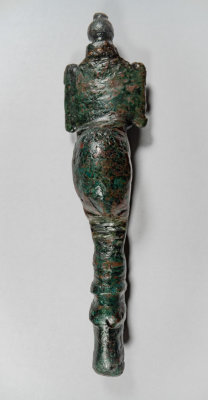
Cruciform brooch with horsehead foot terminal, 106 mm long, from Lincolnshire. Probably 5th Century |
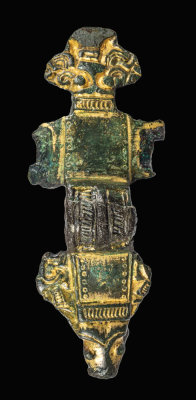
Florid Type 4 cruciform brooch with Salin's Style 1 ornament, 11.3 cm, 6th century, East Anglia. |

Cruciform brooch face ornament detail |

Cruciform brooch anthropomorphic ornament detail |
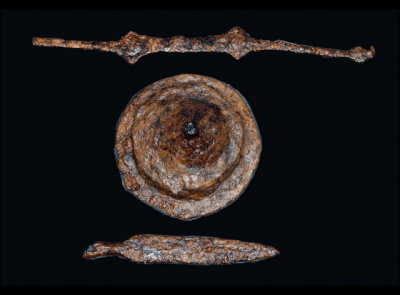
Anglo-Saxon shield boss, handle and spear head. Found near Barrington, Cambridgeshire, England. 6th-7th century. |

Migration Age iconography on a late 5th-early 6th century Anglian bracteate (IK584), published Behr (2010) |
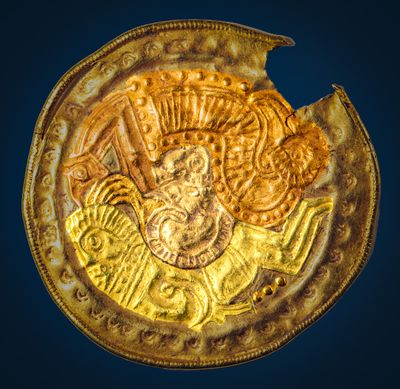
The Migration Age bracteate from Brinton, shaded to highlight component elements of the design |
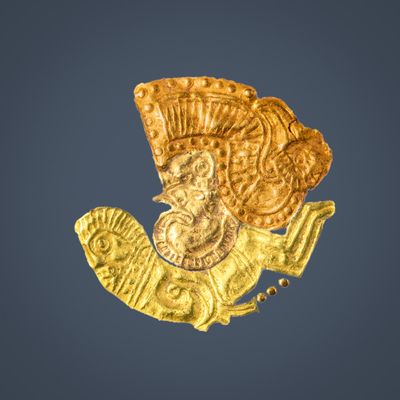
Brinton bracteate design isolating head (inferred to represent Woden) and prone figure (inferred to represent Balder) |
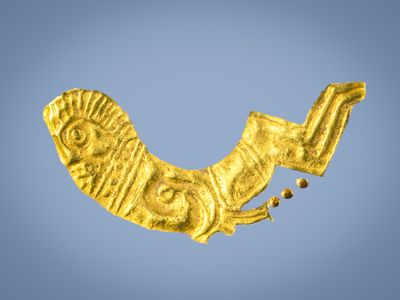
The fallen and bleeding Baeldaeg (Balder), an image from one and a half millennia ago |

Geltorf (Schleswig-Holstein, German) bracteate head design (IK 255) showing stylistic parallels with the Brinton bracteate head |

Migration Age iconography on a late 5th-early 6th century Anglian bracteate (IK584), published Behr (2010) |
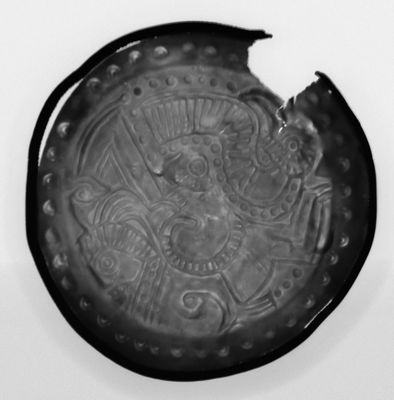
X-Ray computed tomography image revealing pattern of threads in textile used during strike |
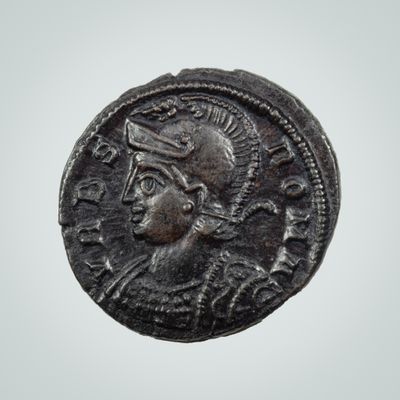
Urbs Roma portrait head, precursor for the Brinton Bracteate head |
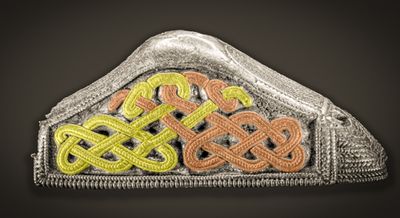
Salin Style II filigree interlace design on a gold sword pommel |

Salin Style II filigree confronting beast design on a gold sword pommel |
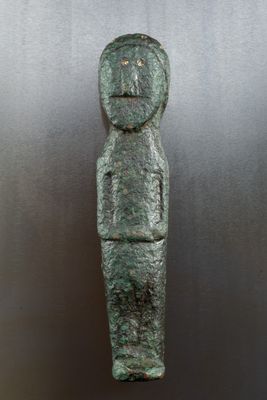
Amuletic male figurine (fertility deity), ca early 7th C, 51 mm, from Friston, Suffolk |
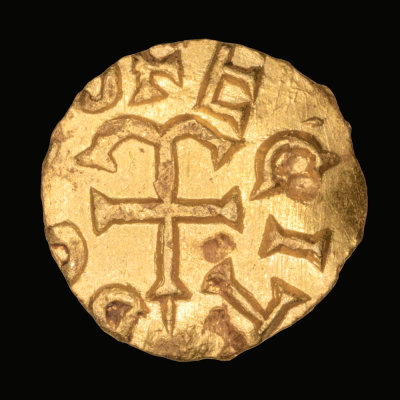
BOSOFECIT, imported 7th century anchored cross Frankish tremissis, published SCBI 69.1089 |

DUNOFITU, imported 7th century anchored cross Frankish tremissis, published SCBI 69.1089 |
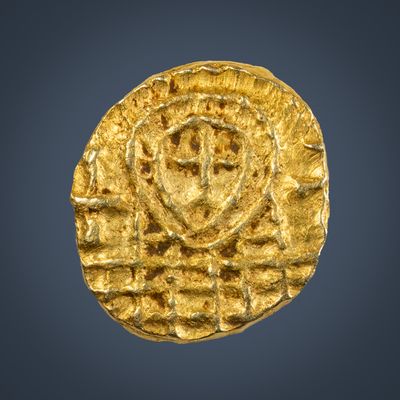
Early Anglian gold shilling, 7th century, Kilham, East Yorkshire. RS.A587. |

Early Anglian gold shilling, 7th century, Kilham, East Yorkshire. |

Runic ring-bearer shilling, East Anglia |

Runic ring-bearer shilling, East Anglia |
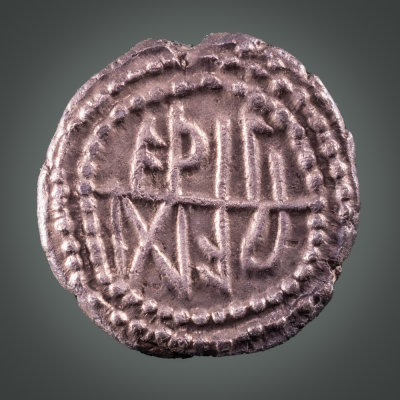
Runic silver pæninga, (675-704), "Series E", type 105, ÆTHILI | RÆD, Published SCBI 69, 295, found 2011 Isle of White |
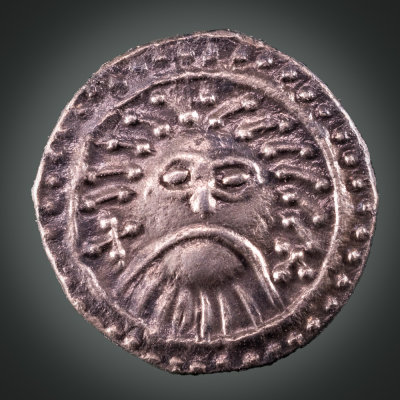
The first Scandinavian coin type from Ribe, Denmark, early 8th C, published SCBI 69, 345. |
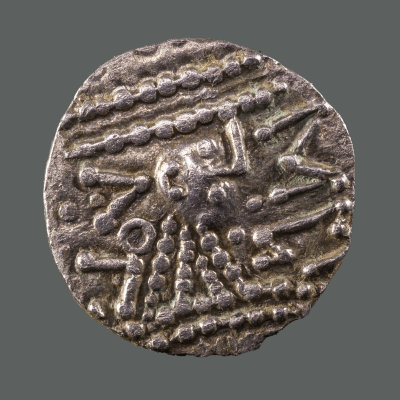
Eclectic Series (710-760), pæninga, Series R4/type 51 mule, Saltire standard, variety P1e, Runic EPA. Published SCBI 69, 713 |

Whitby (found 2008) pæninga, Secondary Series (710-760), published SCBI 69, 791. |

Secondary Series (710-760) pæninga, published SCBI 69, 312. Found north of Driffield, East Yorkshire, September 2007. |
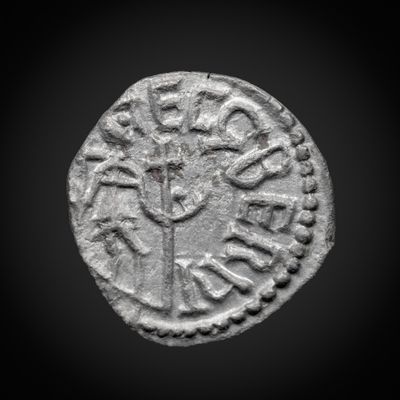
Archbishop Ecgberht (first archbishop of York) with Eadberht, paeninga, 757-758 |
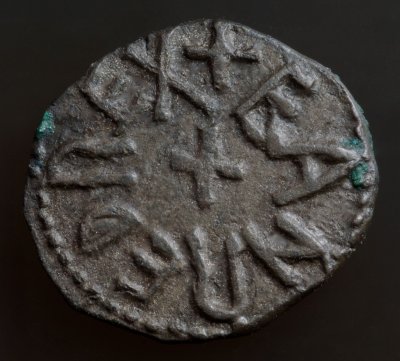
The Kingdom of Northumbria, Eanred copper styca (810-841), from the Bolton Percy Hoard, found 1847. |
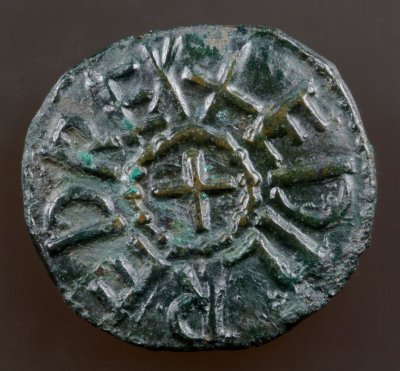
The Kingdom of Northumbria, Æthelred II copper styca from Bolton Percy hoard found in 1847. |
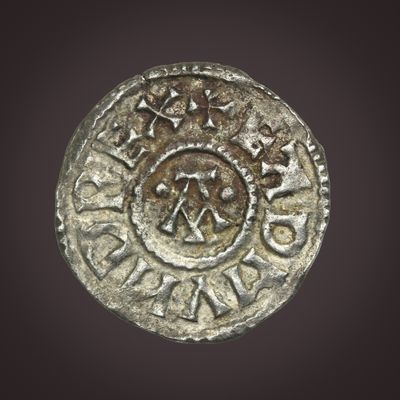
Eadmund penny, East Anglia. The killing of Edmund in 869 by Vikings was a significant moment. Only Wessex remained unconquered. |

Edward the Elder, Vatican Hoard |

Edward the Elder, Vatican Hoard |
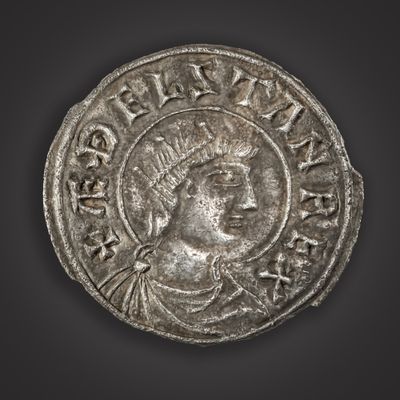
Aethelstan portrait on silver penny. He conquered York in 927. |

Aethelstan circumscription cross silver penny York with the celebrated 'King of all Britain' legend |
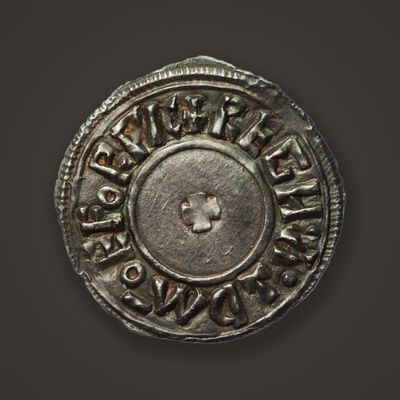
Aethelstan circumscription cross silver penny York with the celebrated 'King of all Britain' legend |
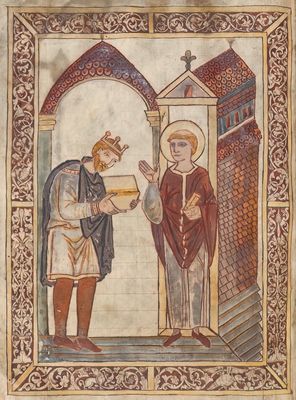
Aethelstan presents a book at St Cuthbert's shrine in 934. Aged pigment colour digitally restored in Aethelstan's face |
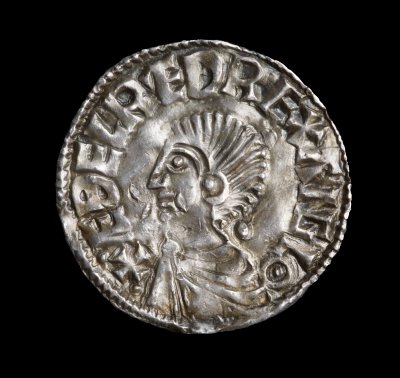
Silver penny of Aethelred II (978-1016), Long Cross type (c.997-c.1003), York, Hundulf. ÆÐELRED REX ANGLO, Viking peck marks. |
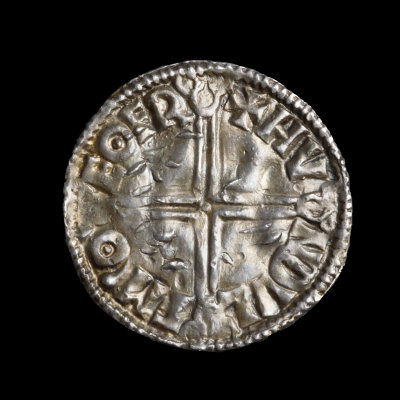
Silver penny of Aethelred II (978-1016), Long Cross type (c.997-c.1003), York, Hundulf. ÆÐELRED REX ANGLO, Viking peck marks. |
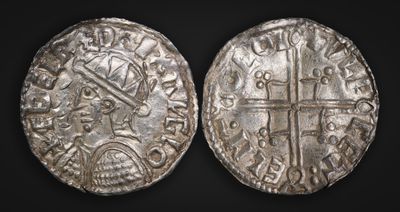
Obv: +ÆĐELRÆD REX ANGLO ; Rev: +VLF CET: ELM- OEOI ; Moneyer: Ulfcetel, York |
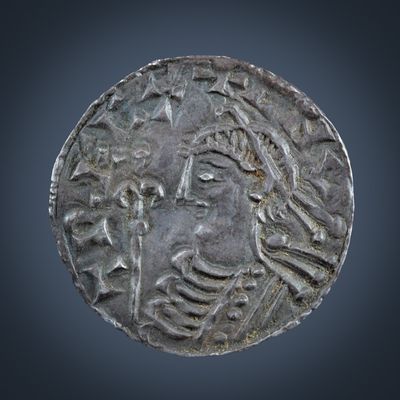
Cnut (1016-35), Penny, Short cross type (c.1029-35/36), York Mint, moneyer Crucan |
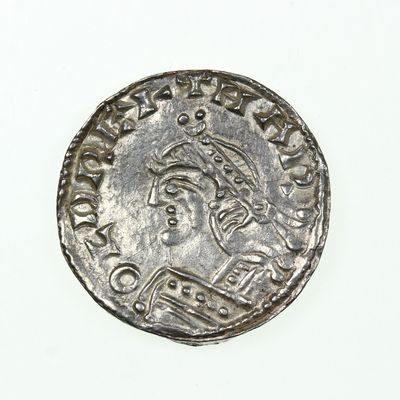
Harold I, 1035-1040, silver penny, jewel cross type, London/GODMAN |
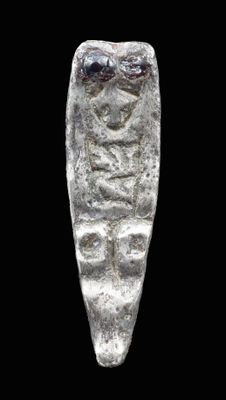
Silver Trewhiddle strapend with animal head and Trewhiddle beast in profile. 9th century. Group A1 (Thomas 2000). |
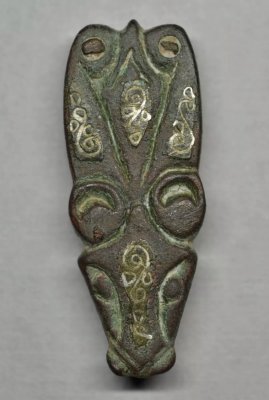
9th century Anglo Saxon strap end, bronze with silver and niello inlays, Thomas Class A Type 5, found Norfolk. |

Anglo Saxon strap end with fine niello-enhanced interlace beast. Thomas (2000) Group A1a. Found near Colchester. |
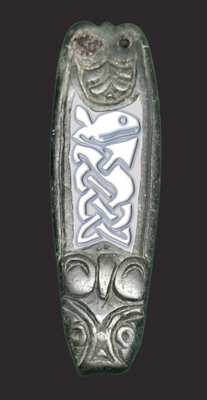
Anglo Saxon strap end with fine niello-enhanced interlace beast. Thomas (2000) Group A1a. Found near Colchester. |
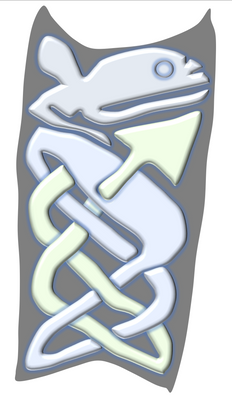
Interlace beast design on preceding strap end |
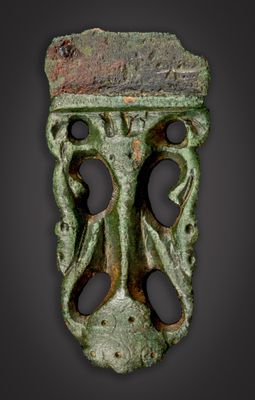
Anglo-Scandinavian strap end, Type E2, ca 900-1075 |

Anglo-Scandinavian strap end, Type E1b |
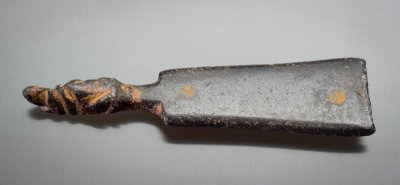
Strap end (Thomas 2000 Class I), 11th century, 37 mm with beast head. |

Norfolk Anglian disc brooch Trewhiddle style |
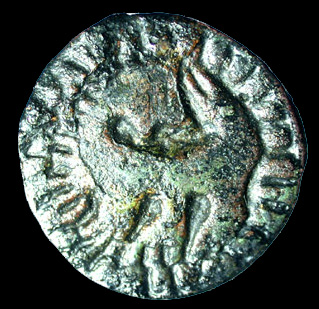
Backward looking beast disc brooch, 9th-10th C, Yorkshire |
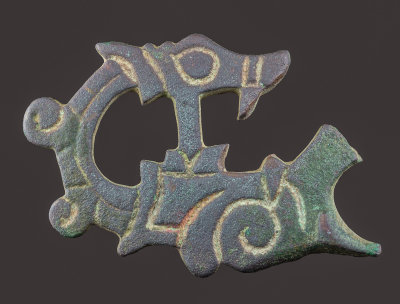
Ringerike style dragon, bridle cheekpiece, 6 cm, 10th-11th century, Essex |

Anglo Saxon enamelled disc brooch in champlevé, 9th Century, with a green cross defined by the four red circles. Norfolk. |
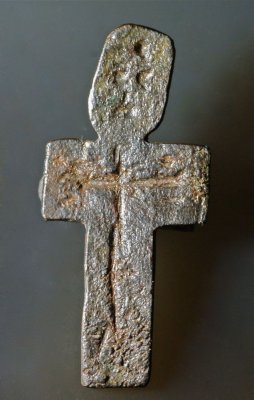
Copper alloy crucifix brooch, 7th-9th century, found near Durham, UK. |
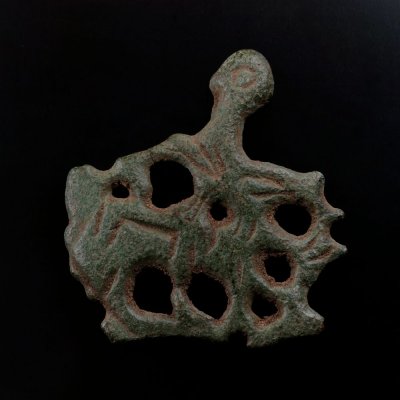
Horse and rider dagger chape in copper alloy, 32 x 30 mm, late Anglo-Saxon, 11th century. Found in Norfolk, UK. |
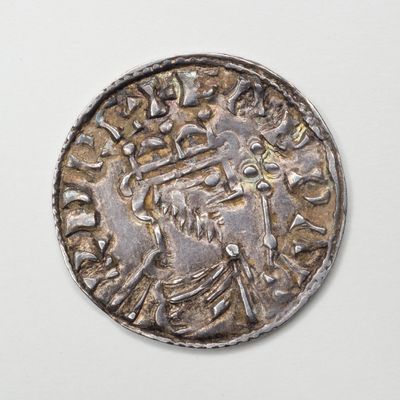
Edward the Confessor (1042-1066), Penny, Hammer Cross type, Hastings |

Edward Confessor pyramids type penny York |

silver penny of Edward the Confessor (1042-1066) minted in York showing pointed helmet and bearded face |
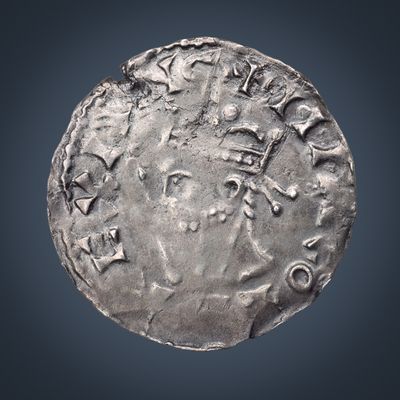
The last Anglo-Saxon ruler, Harold II, York, 1066. This is an artefact marking the end of an age. |











